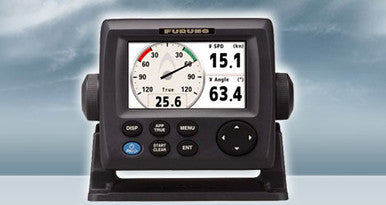The Furuno RD33 is an excellent navigational data organizer. It enables the operator to choose the ideal way to show data from connected equipment like GPS, chartplotters, radars, fish finders, autopilots, instruments, and other sensors including engine info. Its 4.3' high-contrast color LCD can fit into a small space away from its data sources. The screen is super bright, extremely clear, and easy to read. There are various display modes such as Speedometer, Highway, and Text. The text mode can show up to six essential data types. You can customize the display layout according to your needs. This versatile product can be added to a NavNet 3D system to display various navigation data from the CAN bus network. The RD33 accepts a wide range of navigation data and presents them in numerical and graphic forms. You can freely select and arrange the data on the screen. Also, seven customized display settings can be stored in memory for quick and convenient access on board. With its fresh and appealing look, it combines easy access with great user functionality. Thanks to the bright, high-resolution LCD and an intuitive graphical user interface, it offers an easy-to-read display for monitoring remote equipment information. Standard features include a 4.3' sunlight-viewable color LCD with 700 cd brightness, enhanced data legibility due to large characters and high-resolution display, customizable display format from full-screen to 6-way split screen, support for both CAN bus and NMEA0183 interfaces, two independent CAN bus input and output ports for daisy chain networking, internal NMEA0183/CAN bus conversion capability, and simultaneous alarm monitoring for multiple parameters like water temp, depth, speed, etc.

Using the Furuno RD33 is quite straightforward. First, connect it to your equipment such as GPS, chartplotter, etc. through the CAN bus or NMEA0183 interfaces. You can then select the display mode you like, whether it's the Speedometer, Highway, or Text mode. If you want to customize the display layout, just use the intuitive graphical user interface to arrange the data as you wish. You can also save up to seven customized display settings in the memory for quick access later. When it comes to maintenance, keep the display clean by using a soft, dry cloth. Avoid using harsh chemicals as they may damage the screen. Also, make sure the connections are secure to prevent any data transmission issues. And always check the alarm settings regularly to ensure they are working properly for all the monitored parameters like water temperature, depth, and speed.